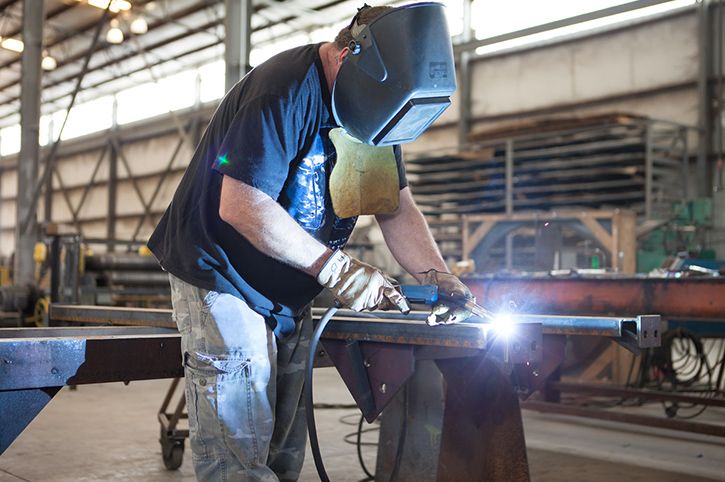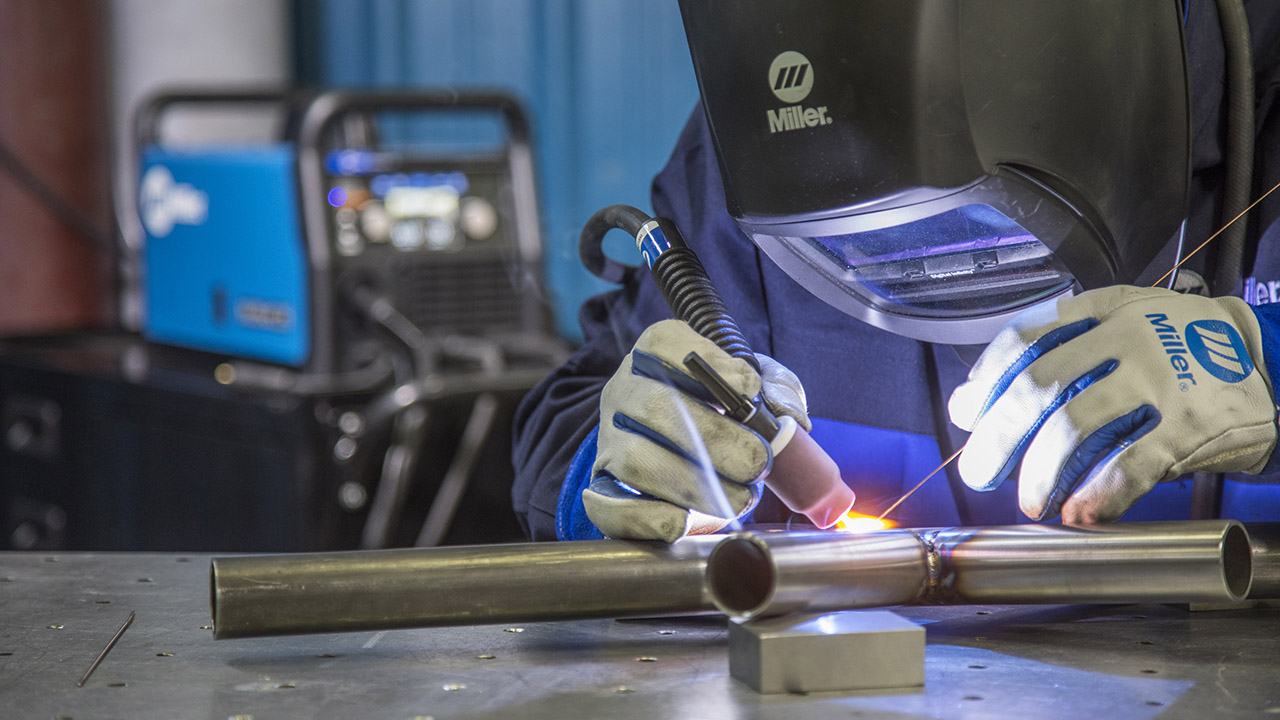Common Welding Repair Service Issues and How to Address Them Effectively
Welding repairs frequently come across an array of concerns that can jeopardize the honesty of the end product. Typical problems consist of inadequate infiltration, porosity, and imbalance, to name a few. Each issue provides special obstacles that need certain methods for resolution. Recognizing these issues is important for welders intending to improve their end results and skills. This discussion will certainly check out these common welding fixing problems and effective techniques to address them.
Insufficient Penetration
Insufficient penetration happens when the weld steel stops working to fully fuse with the base product, resulting in weak joints and possible structural failures. This problem frequently comes from inadequate warmth input, wrong electrode angle, or improper welding speed. Welders might encounter insufficient penetration as a result of a mistake of the needed criteria for a details material density or kind. Furthermore, contamination on the base material's surface area can hinder efficient bonding, worsening the trouble. To address insufficient infiltration, welders ought to ensure ideal settings on their equipment and keep a tidy job surface. Regular assessment of welds is recommended to determine any kind of deficiencies early, permitting timely improvements and the prevention of compromised architectural stability in welded assemblies.
Porosity
Porosity is a common issue in welded joints that shows up as small gas bubbles caught within the weld steel. This issue can compromise the honesty of the weld, resulting in minimized strength and prospective failing under stress and anxiety. Belgrade. Porosity commonly arises from contamination, dampness, or inappropriate welding strategies, which permit gases to run away right into the liquified weld swimming pool. To resolve porosity, welders need to assure correct surface area prep work, preserve a clean working environment, and use ideal welding parameters. Additionally, selecting the ideal filler product and protecting gas can alleviate gas entrapment. Regular assessment and testing of welds can aid recognize porosity early, ensuring prompt corrective actions are taken, consequently protecting the top quality and reliability of the welded framework
Imbalance
Imbalance in welding can arise from various factors, consisting of incorrect setup and thermal development. Understanding the source is necessary for efficient resolution. Several correction techniques are readily available to realign components and assure structural honesty.
Root causes of Imbalance
Welding misalignment usually originates from a range of underlying issues that can endanger structural honesty. One key cause is inappropriate fit-up of elements prior to welding, which can result in voids and uneven surfaces. Variations in thermal growth during the welding process can also cause distortion, especially if the materials being signed up with have different coefficients of development. Additionally, poor clamping and fixturing might fail to hold elements firmly in area, resulting in activity during welding. Poorly conserved tools, including welding equipments and tools, might introduce disparities in the weld bead, further adding to imbalance. Driver error, stemming from inadequate training or experience, can also play a considerable function in producing misaligned welds.

Improvement Strategies Available
Resolving imbalance efficiently requires a combination of rehabilitative techniques tailored to the particular issues at hand. One typical approach is making use of fixtures or jigs to hold parts in the appropriate position throughout welding, ensuring constant positioning. Additionally, pre-heating the products can help in reducing distortion and improve fit-up. For significant misalignment, mechanical adjustment strategies, such as making use of hydraulic jacks or clamps, can be used to deal with the setting before welding. Post-weld warmth treatment might also be essential to relieve stresses triggered by misalignment. Mindful examination and modification throughout the configuration stage can stop misalignment concerns from becoming substantial problems, promoting a smoother welding process and boosting general architectural integrity.
Distortion
Distortion is an usual challenge in welding that can occur from different elements, consisting of irregular heating & cooling. Understanding the root causes of distortion is essential for applying effective avoidance techniques. Addressing this issue not only improves structural honesty yet likewise enhances the general quality of the weld.
Reasons for Distortion
When based on the intense warmth of welding, products commonly go through modifications that can cause distortion. This sensation mostly emerges from thermal expansion and tightening during the welding process. As the weld area warms up, the product broadens; upon cooling, it contracts, which can develop interior stress and anxieties. Additionally, unequal heating across a workpiece can intensify these tensions, causing warping or bending. The kind of material additionally plays a considerable role; steels with differing thermal conductivity and coefficients of development might react in different ways, resulting in unpredictable distortions. Inadequate joint layout and insufficient fixturing can contribute to misalignment throughout welding, enhancing the chance of distortion. Comprehending these causes is crucial for effective welding repair service and prevention methods.
Prevention Techniques
Reliable prevention methods for distortion during welding concentrate on regulating warm input and making sure proper joint design. Keeping a constant heat input aids to minimize thermal development and tightening, which can result in distortion. Using methods such as preheating the work surface can also decrease the temperature level gradient, advertising uniform heating. Furthermore, picking proper joint designs, such as T-joints or lap joints, can enhance security and minimize stress concentrations. Applying proper fixturing to secure the workpieces in area better aids in keeping placement throughout the welding process. Staggered welding series can distribute warm extra equally, stopping localized distortion. By applying these techniques, welders can greatly lower the likelihood of distortion and boost the general top quality of their welds.
Splitting
Cracking is an usual concern encountered in welding fixings, often arising from different aspects such as improper cooling rates, material selection, or inadequate joint preparation. The occurrence of splits can substantially jeopardize the stability of the weld, causing prospective failures throughout procedure. To address this concern, welders must initially assess the source, ensuring that materials are suitable and appropriately selected for the specific application. In addition, managing the cooling price throughout the welding procedure is crucial; rapid cooling can generate stress and lead to breaking. Appropriate joint design and preparation also contribute to decreasing the danger. Executing these techniques can boost weld high quality and toughness, ultimately lowering the probability of breaking in ended up weldments.

Incomplete Fusion
A substantial concern in welding fixings is insufficient blend, which happens when the weld metal does not sufficiently bond with the base material or previous weld passes - Montana Mobile Welding and Repair Belgrade Fabrication. This problem can cause weaknesses in the joint, possibly endangering the stability of the welded structure. Aspects contributing to incomplete blend include inadequate warmth input, incorrect welding technique, and contamination of the surfaces being joined. To address this issue properly, welders need to guarantee proper pre-weld cleaning and surface prep work, as well as change their welding parameters to accomplish appropriate penetration and blend. Normal evaluation during the welding process can also assist determine insufficient blend early, permitting timely rehabilitative measures to enhance the total high quality of the weld
Overheating
While welding repair work can improve architectural stability, overheating offers a substantial obstacle that can bring about product deterioration. Extreme warm during welding can change the mechanical buildings of steels, leading to reduced strength, raised brittleness, and bending. This sensation is specifically critical Belgrade Fabrication in high-stress applications where architectural reliability is extremely important. Recognizing overheating can involve visual evaluations for staining or distortion, along with checking temperature throughout the welding process. To mitigate the dangers associated with getting too hot, welders ought to use proper techniques, such as regulating heat input, readjusting travel speed, and using suitable filler materials. Additionally, executing pre- and post-weld heat treatments can aid recover product buildings and improve the overall top quality of the repair service, guaranteeing lasting performance and safety.
Often Asked Inquiries
What Are the Usual Signs of a Welding Issue?

Just How Can I Evaluate My Welds for Top quality?
To evaluate welds for quality, one can utilize aesthetic assessments, ultrasonic screening, and radiographic approaches. Each technique assures structural honesty, determines issues, and verifies adherence to specified criteria, ultimately enhancing the dependability of the welded joints.
What Safety and security Safety Measures Should I Take While Welding?
When welding, one should prioritize safety and security by using ideal personal protective devices, guaranteeing correct ventilation, protecting combustible products away, maintaining a clean work space, and understanding environments to stop injuries and mishaps.
Can I Fix a Weld Without Remodeling the Entire Joint?
Repairing a weld without redesigning the whole joint is possible, depending upon the damages (Montana Mobile Welding and Repair Belgrade Fabrication). Strategies such as grinding, adding filler material, or making use of a welding procedure can efficiently address specific flaws while protecting the bordering framework
What Devices Are Important for Efficient Welding Repairs?
Necessary devices for reliable welding repairs include a welding device, wire brush, mill, protective gear, clamps, and filler materials. Each tool plays an essential function in making certain top quality and safety and security throughout the repair service procedure. Porosity commonly emerges from contamination, dampness, or inappropriate welding strategies, which permit gases to escape right into the molten weld pool. Badly kept equipment, including welding machines and tools, may present disparities in the weld bead, further contributing to imbalance. When subjected to the extreme warmth of welding, products usually undertake modifications that can lead to distortion. Fracturing is a common concern encountered in welding repair work, frequently resulting from numerous variables such as incorrect cooling rates, product choice, or insufficient joint preparation. A substantial concern in welding repairs is insufficient blend, which occurs when the weld steel does not properly bond with the base material or previous weld passes.